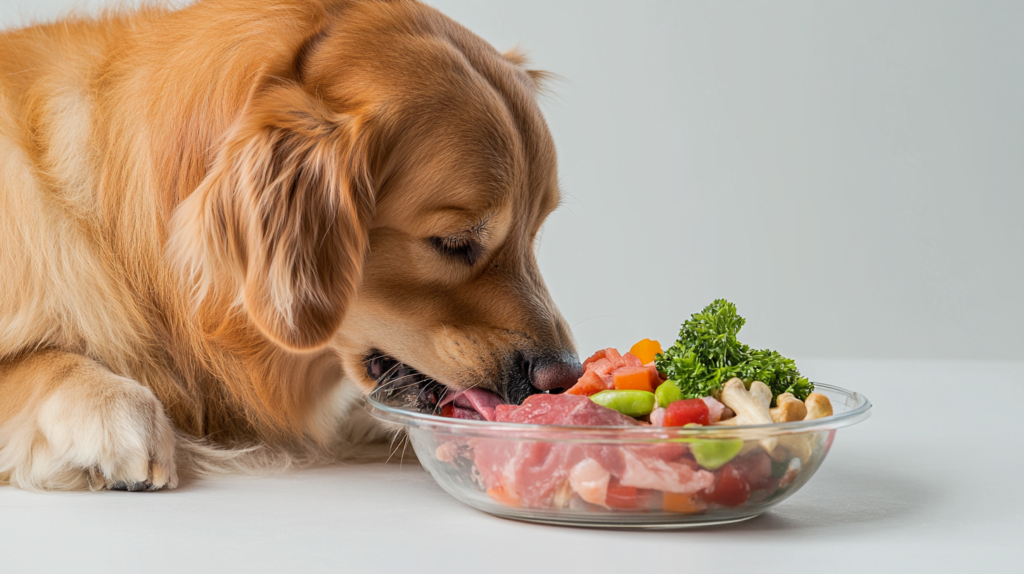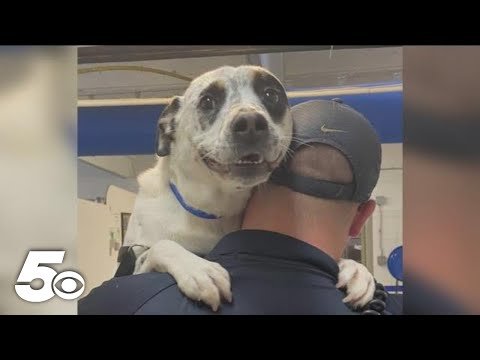Imagine walking into your local pet store and seeing shelves lined with bags of kibble, cans of wet food, and… raw meat?
Welcome to the world of raw food diets for dogs, a nutritional approach that’s been wagging its way into the mainstream of canine care.
From urban apartments to rural farms, more and more dog owners are exploring this primal feeding method, sparking both enthusiasm and debate in veterinary circles.
But what exactly is a raw food diet for dogs, and why has it captured the attention of so many pet parents?
Let’s sink our teeth into this meaty topic and uncover the bones of what you need to know! 👇
Understanding the Basics of Raw Food Diets
At its core, a raw food diet for dogs consists of uncooked animal products and some plant matter.
Key Components of a Raw Food Diet
The typical raw diet includes:
- Raw muscle meat
- Raw meaty bones
- Organ meats (like liver and kidneys)
- Raw eggs
- Fruits and vegetables (in small amounts)
- Some dairy, such as yogurt (optional)
The BARF Diet
(I know it sounds terrible but bear with me.) BARF, which stands for “Biologically Appropriate Raw Food” or “Bones and Raw Food,” is a popular, but effective, raw diet model.
It typically consists of 70% muscle meat, 10% raw edible bone, 5% liver, 5% other organ meat, and 10% vegetables and supplements.
The Theory Behind Raw Feeding
Proponents of raw diets believe that this approach offers numerous benefits to dogs.
Natural Nutrition
The idea is that dogs are descendants of wolves and are biologically adapted to a diet of raw meat and bones.
Avoiding Processed Foods
Raw feeding eliminates the need for processed dog foods, which may contain artificial preservatives and fillers.
Customization
Raw diets can be tailored to meet individual dogs’ nutritional needs based on factors like age, weight, and health conditions.

Potential Benefits of a Raw Food Diet
Many pet owners report various improvements in their dogs after switching to a raw diet.
Improved Dental Health
Chewing on raw meaty bones can help clean dogs’ teeth naturally, potentially reducing tartar buildup.
Healthier Skin and Coat
The high-quality proteins and fats in raw diets may contribute to a shinier coat and healthier skin.
Better Digestion
Some dogs experience improved digestion and smaller, firmer stools on a raw diet.
Increased Energy Levels
Many owners report that their dogs have more energy and vitality on a raw food diet.
Weight Management
Raw diets can be effective for weight control, as they’re often lower in carbohydrates than commercial kibble.
Potential Risks and Concerns
While raw diets have their advocates, there are also potential risks to consider.
Bacterial Contamination
Raw meat can contain harmful bacteria like Salmonella or E. coli, posing risks to both dogs and humans.
Nutritional Imbalances
Without careful planning, raw diets may not provide all the necessary nutrients in the right proportions.
Choking or Digestive Tract Injuries
Bones in raw diets can pose choking hazards or cause internal injuries if not prepared properly.
Cost and Time
Raw diets can be more expensive and time-consuming to prepare than commercial dog foods.

Getting Started with a Raw Food Diet
If you’re considering a raw diet for your dog, it’s crucial to approach it thoughtfully and safely.
Consult with a Veterinarian
Before making any significant changes to your dog’s diet, consult with a veterinarian or a canine nutritionist.
Start Gradually
Introduce raw foods slowly, mixing them with your dog’s current diet to allow for a smooth transition.
Choose High-Quality Ingredients
Source your meats from reputable suppliers and ensure they’re fresh and suitable for raw feeding.
Practice Proper Food Handling
Follow strict hygiene practices when preparing raw meals to minimize the risk of bacterial contamination.
Types of Raw Food Diets
There are several approaches to feeding a raw diet to dogs.
Commercially Prepared Raw Diets
These are pre-made raw food products that offer convenience and balanced nutrition.
Homemade Raw Diets
Some pet owners prefer to prepare raw meals at home, allowing for complete control over ingredients.
Combination Approach
Some dogs thrive on a combination of raw foods and high-quality commercial dog food.

Monitoring Your Dog’s Health on a Raw Diet
Regular health checks are crucial when feeding a raw diet.
Watch for Changes
Monitor your dog’s weight, energy levels, and overall health closely after switching to a raw diet.
Regular Vet Check-ups
Schedule regular veterinary check-ups to ensure your dog is thriving on the new diet.
Adjust as Needed
Be prepared to modify the diet based on your dog’s individual needs and responses.
Common Myths About Raw Feeding
There are several misconceptions surrounding raw diets for dogs.
Myth: All Dogs Should Eat Raw
While some dogs thrive on raw diets, it’s not suitable for every dog.
Factors like age, health status, and individual needs should be considered.
Myth: Raw Diets Cure All Health Problems
While raw diets can offer benefits, they’re not a cure-all for every canine health issue.
Myth: Raw-Fed Dogs Don’t Need Dental Care
Even on a raw diet, dogs still need regular dental care and check-ups.
Want to keep up to date with new pet information?
Conclusion
If you’re intrigued by the idea of raw feeding, start by doing thorough research and consulting with veterinary professionals.
Remember, every dog is unique, and what works for one may not be suitable for another.
Have you tried a raw food diet for your dog?
We’d love to hear about your experiences!
Share your story, tips, or questions on Facebook using the hashtag #RawDogDietJourney.
Your insights could help other pet owners make informed decisions about their dogs’ nutrition.
SHARE now with your friends!


